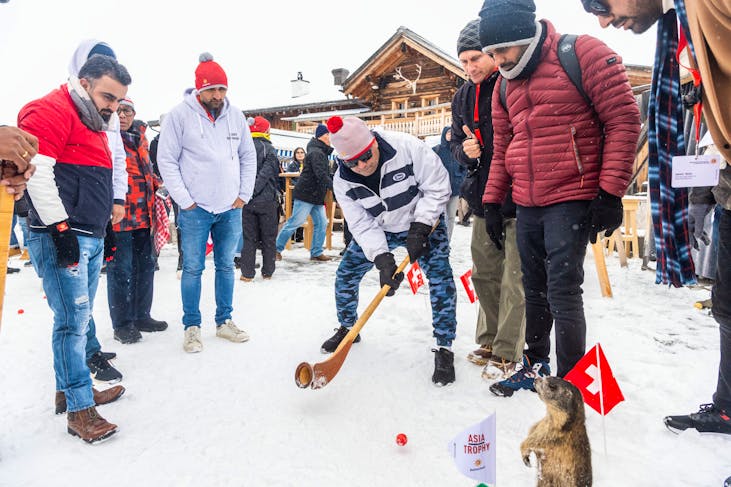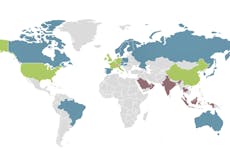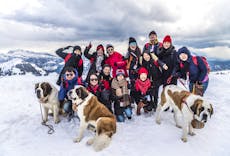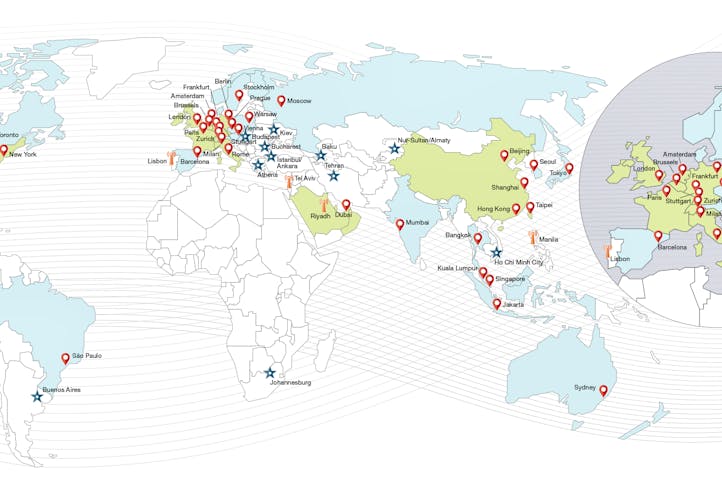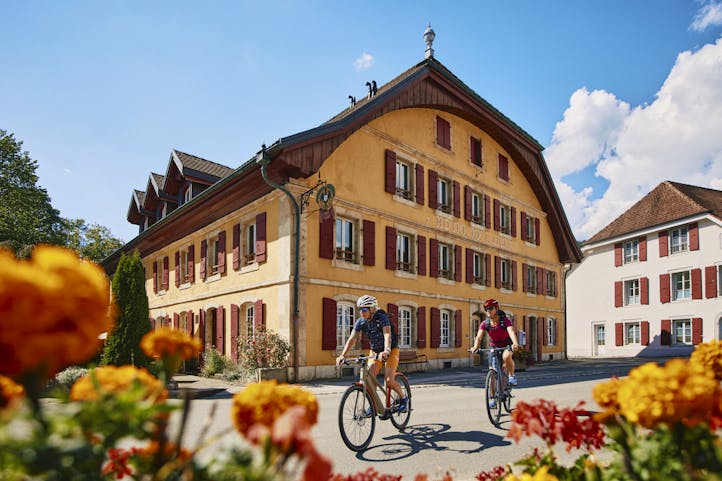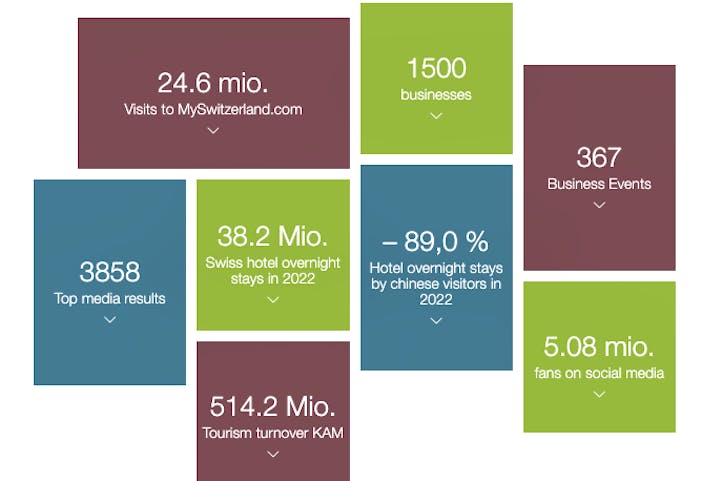Find out more about:
Guests from long-haul markets provided the highest growth rates for hotel overnight stays in the last ten years prior to the pandemic. For historical and demographic reasons, the potential of long-haul markets is significantly higher than of the “mature” short-haul markets.
The hotel overnight stays generated by the long-haul markets in 2022 are still below the pre-pandemic year 2019. On the other hand, domestic guests have increased strongly.
Even though, for Swiss tourism, 2022 marked a slow return to normality for tourism as it was before the outbreak of the pandemic, the results for long-haul markets were not very positive. Overnight stays in the hotel industry in that segment were still almost 35% below 2019 levels, representing a deficit of almost 3.3 million overnight stays. The decline in overnight stays also could not be compensated for by domestic guests, despite the still-high enthusiasm among the local population for holidays in their own country – with a record 17,5% increase in hotel overnight stays compared with pre-pandemic levels in 2019. For the overall balance sheet, this ultimately resulted in a deficit of 3.3% compared with 2019 figures.
High potential for added value with long-distance visitors from USA to China
Guests from the long-haul markets are responsible for “only” 18% of all hotel overnight stays each year on average (2013 to 2022), but contribute to 28.6% of total tourism revenue. Guests from overseas generally prefer offerings in the higher price categories and record the highest average daily spend of the three market groups when visiting Switzerland.
Several aspects of their travel and booking behaviour make them a guest group that is essential to the health of Swiss tourism: They book well in advance (which gives tourism stakeholders planning certainty), travel all year round, including in the early and late season (as well as outside of school holidays and on weekends) and regardless of the weather. In doing so, they allow many tourism providers to keep their businesses open all year round – thus securing year-round jobs for tourism. In addition, business travel (congresses, meetings, incentive trips, etc.) is highly dependent on guests from long-haul markets, who play a crucial role for tourism in Swiss cities.
Striving for a balanced market mix
Switzerland Tourism ST used additional federal recovery funds in 2022 to spur on recovery in Swiss tourism after the pandemic subsided. This was all the more important given the uncertain economic and geopolitical environment. The funds were always used with the five most strategically important tourism goals in mind (see brochure Strategy and Planning 2023 to 2025 in German): attracting new guests, improving tourism use in all seasons and regions, extending length of stay, increasing added value generated by tourism, and a balanced guest mix of 20% long-haul markets, 35% short-haul markets, and 45% domestic market. The diversity of guests in Switzerland as a holiday destination also increases the resilience of Swiss tourism to current and future crises.
Guests from long-haul markets are the most likely to contribute to several of these goals at once, thanks to their travel patterns and preferences. The reasons for this can be seen in the example of the Summer Asia Camp with its focus on the trail running community. This is a group of guests that has seen large growth rates in Asia since the pandemic, likes to holiday in the off-season, and generally books longer stays for acclimatisation reasons.


